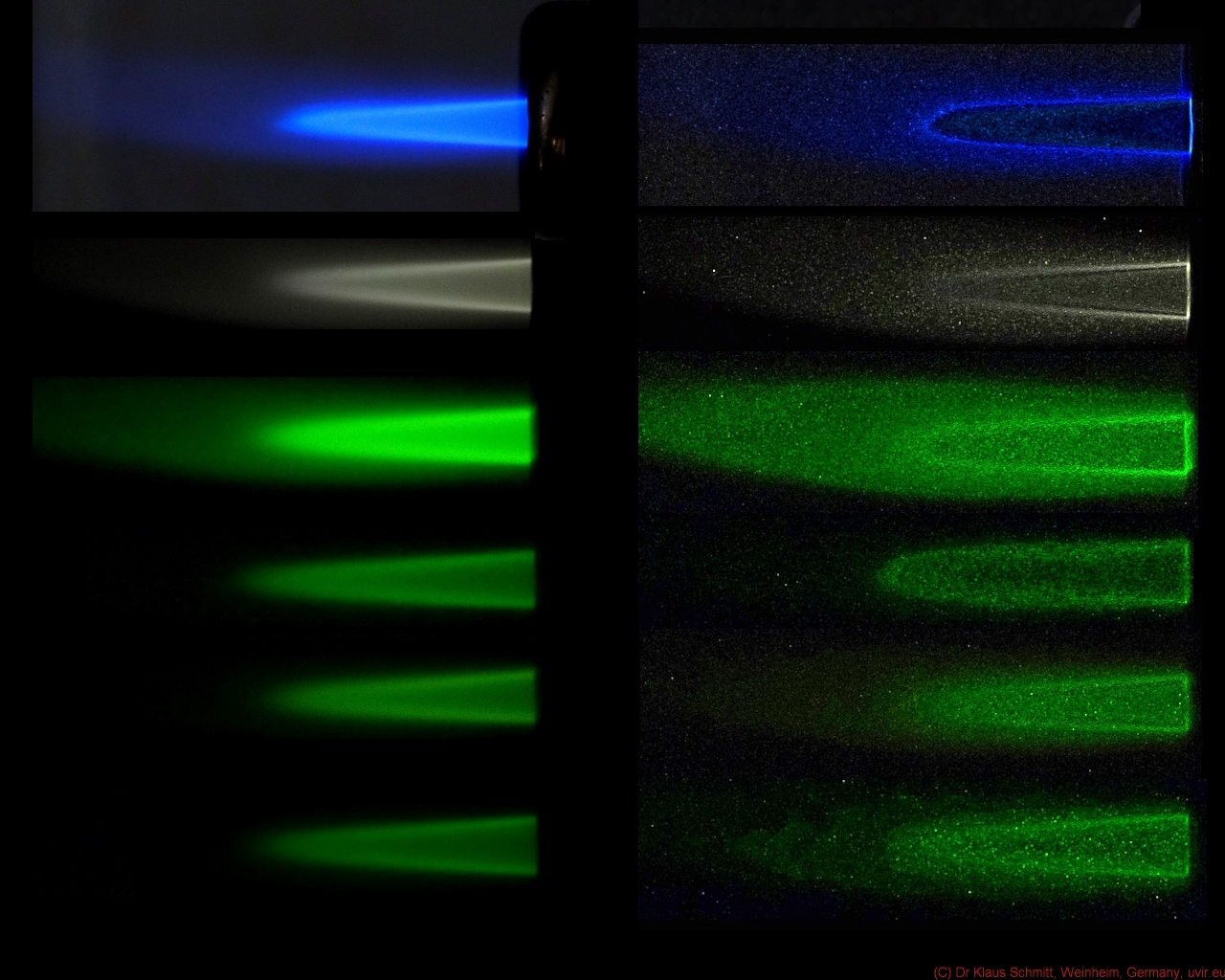Dr Klaus Schmitt
Well-known member
A simple try to record videos at 250nm UV-C using an amplified MCP camera setup.
There are rather interesting Nitrogen lines being emitted in UV-C and UV-B especially
on the hot zone at the outside and top of that candle flame, where the gases get oxidized
with the Oxygen of the surrounding air, whereas the inside appears rather dark.
[MCP = Multi Channel Plate; an amplified system with UV sensitive entrance plate
down to 190nm. amplifies 20-50.000x (adjustable) and has an green phosphor screen
which I made a relay lens for that allows to project that image to a camera sensor.]
VIDEO IS HERE: Candle at 250nm

There are rather interesting Nitrogen lines being emitted in UV-C and UV-B especially
on the hot zone at the outside and top of that candle flame, where the gases get oxidized
with the Oxygen of the surrounding air, whereas the inside appears rather dark.
[MCP = Multi Channel Plate; an amplified system with UV sensitive entrance plate
down to 190nm. amplifies 20-50.000x (adjustable) and has an green phosphor screen
which I made a relay lens for that allows to project that image to a camera sensor.]
VIDEO IS HERE: Candle at 250nm
Last edited:

